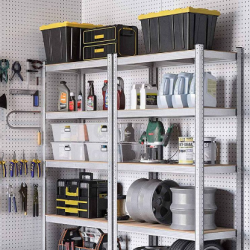How vacuum conveying systems are integral to growth
Vacuum conveying is not suitable for all materials and manufacturing scenarios, but in the right cases, it offers enormous opportunities for improvements in capacity and profitability whilst frequently providing environmental and health and safety improvements as an added bonus.
Simplicity
A basic vacuum conveying system uses a metering device at the inlet, a pipeline, a receiver and an exhauster. The simplicity of the system eliminates overheads for repairs, spares, installation labour, maintenance and monitoring staff. It is also much quicker to clean, providing major savings in productivity and labour overheads.
Safety
There are many human risks associated with old-style mechanical conveyors with their countless moving parts and with those that entail frequent heavy lifting up to hoppers. Eliminating human and environmental risks can also help you save money. Incidents necessitate downtime, absenteeism, injury compensation, insurance, sick pay, legal liability, investigations and materials wastage.
Labour
It’s relatively easy to integrate these conveyors into a fully robotic production line. Increased productivity will give the company opportunities to reassign its conveyor labour force to safer roles.
Contamination
Because there are fewer parts and materials in the conveyor, there will be fewer problems with UK, EU or international regulations about materials that contact foodstuffs; an example can be seen in the European Framework Regulation (EC) 1935/2004.
The vacuum prevents leakage, so there is minimal spillage or pollution into the environment or cross-contamination of one product feed with another. A vacuum conveyor is an equally sensible solution for materials that need protection from the outside, like foodstuffs, or to provide protection in the case of toxic or abrasive materials. The elimination of contamination either way translates into improved productivity.
Energy Use
As with other pneumatic systems, energy consumption can be higher, but there are solutions that improve energy efficiency and they’re easier to implement for vacuum systems because they’re often shorter and less bulky. One is to add pumps nearer to the points where they are needed rather than powering everything from one central point. An experienced pneumatic specialist like those at http://www.aptech.uk.com/pneumatic-conveying/vacuum-conveying/ can advise on this matter.
Throughput
For suitable materials, the throughput of your plant can be dramatically increased, allowing you to scale up and regulate production. Many pharmaceutical companies have discovered that vacuum conveyors are helping them keep up with the increasing global demand for tablet production.



